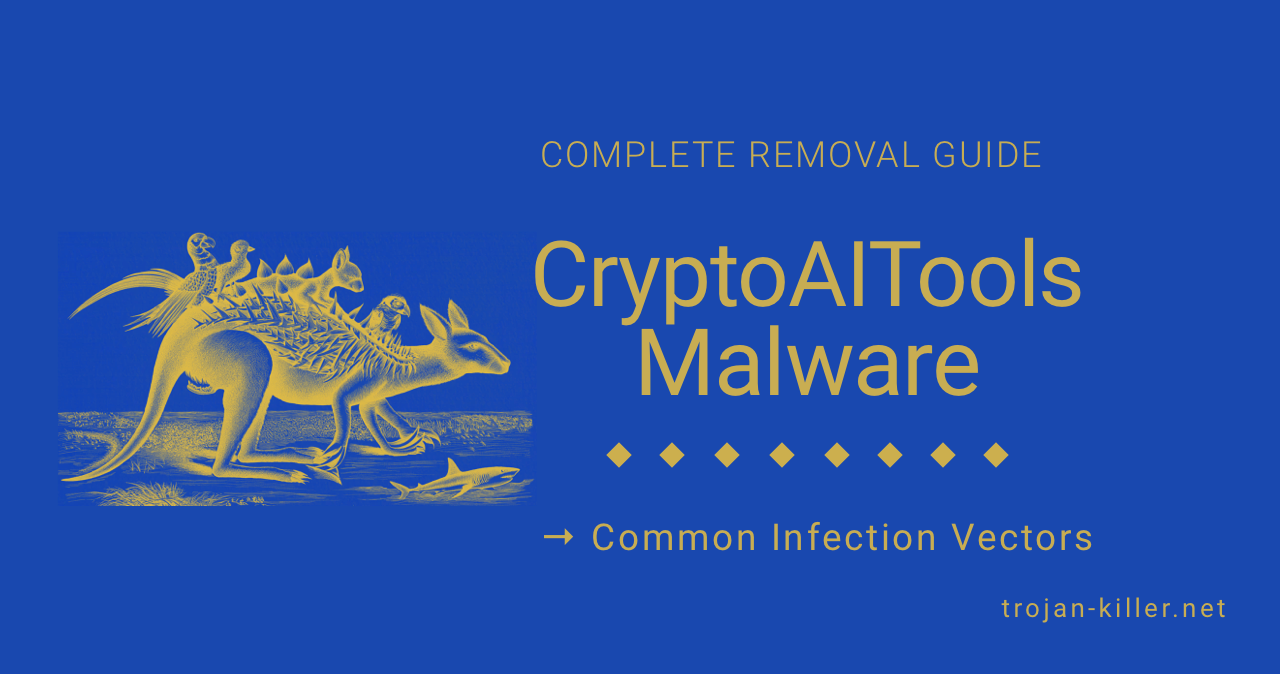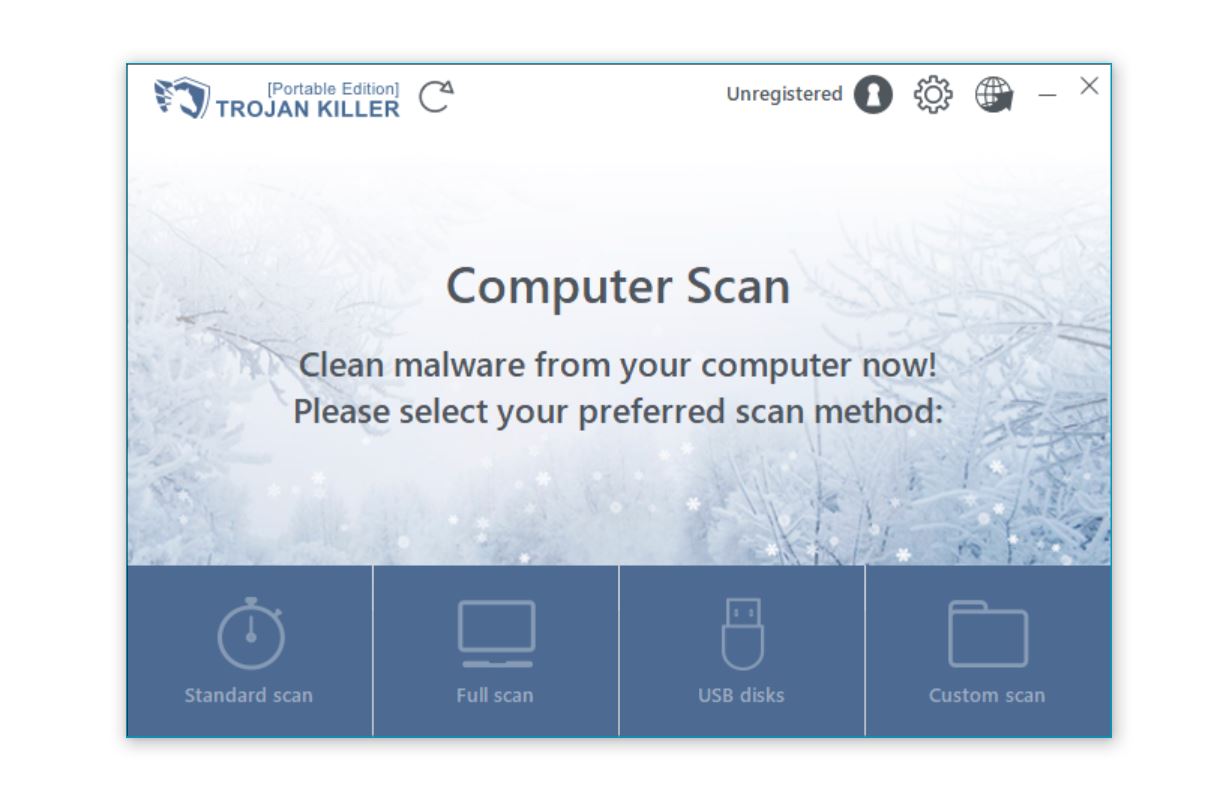Physical Address
Lesya Kurbasa 7B
03194 Kyiv, Kyivska obl, Ukraine
Physical Address
Lesya Kurbasa 7B
03194 Kyiv, Kyivska obl, Ukraine

CryptoAITools is a dangerous cross-platform malware designed to steal cryptocurrency by harvesting sensitive information from infected systems. This comprehensive guide provides detailed technical analysis, distribution methods, removal instructions, and prevention strategies for those affected by this deceptive threat. By following our step-by-step methodology, you’ll learn how CryptoAITools operates, how to safely remove it from your system, and how to protect your digital assets from similar threats.
| Common Names |
|
| Type | Information Stealer, Cryptocurrency Stealer, Trojan |
| Platforms Affected | Windows and macOS (cross-platform) |
| Programming Language | Python |
| Infection Level | Severe – targets financial assets and sensitive information |
| Data Risk | Critical – steals cryptocurrency wallet information, passwords, and financial data |
| Distribution Methods | PyPI (Python Package Index), GitHub repositories, disguised as cryptocurrency trading tools |
| Associated Domains | coinsw[.]app – payload hosting and command & control server |
CryptoAITools is a sophisticated cross-platform malware specifically designed to steal cryptocurrency and sensitive financial information. This malicious Python package targets both Windows and macOS systems, making it a versatile threat for cybercriminals. While presenting itself as a legitimate cryptocurrency trading tool, CryptoAITools actually operates as a trojan that quietly harvests valuable data in the background.
What makes CryptoAITools particularly dangerous is its deceptive nature – presenting users with a seemingly functional cryptocurrency trading interface while secretly accessing and exfiltrating sensitive information. The malware’s cross-platform capabilities allow it to adapt its behavior based on the victim’s operating system, ensuring effective data theft regardless of platform.
According to GridinSoft’s cryptocurrency threat analysis, cryptocurrency-stealing malware has become increasingly sophisticated in recent years, with threats like CryptoAITools representing a significant evolution in both technical capabilities and social engineering tactics.
Like many sophisticated information stealers, CryptoAITools is designed to operate covertly, making detection challenging. However, the following symptoms might indicate an infection:
Source: GridinSoft Trojan Analysis, analysis of CryptoAITools infection chain
CryptoAITools employs sophisticated distribution methods focused on targeting cryptocurrency enthusiasts and traders:
The primary distribution channel for CryptoAITools was the Python Package Index (PyPI), the official repository for Python packages. The malware was disguised as a legitimate cryptocurrency trading tool, appealing to developers and traders looking to automate or enhance their trading capabilities. According to security reports, the malicious package received over 1,000 downloads before it was identified and removed from PyPI.
CryptoAITools operators maintained GitHub repositories where they marketed their malicious software as “Meme Token Hunter Bot” – purportedly an AI-powered bot for trading meme tokens on the Solana network. The threat actors employed several techniques to create an appearance of legitimacy:
The operators of CryptoAITools leveraged social engineering tactics focused on the growing cryptocurrency and AI markets. By combining these two popular technologies in their marketing, they created an appealing proposition for crypto enthusiasts looking to capitalize on trading opportunities. The promise of using AI for trading cryptocurrency – particularly “meme tokens” known for volatile price movements – provided strong incentive for victims to download and install the malicious package.
For security researchers and system administrators, here are the technical aspects of CryptoAITools:
CryptoAITools is developed in Python, making it inherently cross-platform. Upon execution, the malware:
CryptoAITools has extensive data harvesting capabilities targeting cryptocurrency-related information:
CryptoAITools communicates with a command and control (C2) server hosted at coinsw[.]app. This domain presents itself as a legitimate cryptocurrency trading bot service, complete with fake reviews and testimonials. The C2 server serves several functions:
Removing CryptoAITools requires a thorough approach due to its cross-platform nature and sophisticated data theft capabilities. Follow these steps to eliminate the threat from your system:
For Windows systems, Trojan Killer provides effective removal of CryptoAITools malware and its components:

Warning: Manual removal of sophisticated malware is challenging and should only be attempted by users with advanced technical knowledge. For most users, automated removal tools like Trojan Killer are recommended.
pip list |
pip uninstall [package_name] -y |
Check these common locations for CryptoAITools components:
# Run these commands in PowerShell as Administrator# Remove Python package locationsRemove-Item -Path "$env:LOCALAPPDATA\Programs\Python\*\Lib\site-packages\crypto*" -Recurse -Force -ErrorAction SilentlyContinueRemove-Item -Path "$env:APPDATA\Python\*\site-packages\crypto*" -Recurse -Force -ErrorAction SilentlyContinue# Check common malware locationsRemove-Item -Path "$env:TEMP\*.py" -Force -ErrorAction SilentlyContinueRemove-Item -Path "$env:TEMP\*.exe" -Force -ErrorAction SilentlyContinueRemove-Item -Path "$env:APPDATA\*.py" -Force -ErrorAction SilentlyContinueRemove-Item -Path "$env:LOCALAPPDATA\Temp\*.py" -Force -ErrorAction SilentlyContinue# Look for trading bot related filesRemove-Item -Path "$env:USERPROFILE\*\*token*hunter*" -Recurse -Force -ErrorAction SilentlyContinueRemove-Item -Path "$env:USERPROFILE\*\*crypto*tools*" -Recurse -Force -ErrorAction SilentlyContinue |
# Run in PowerShell as Administrator# Check for suspicious scheduled tasksGet-ScheduledTask | Where-Object {$_.TaskName -match "python|crypto|token|trading"} | Unregister-ScheduledTask -Confirm:$false# Check for suspicious servicesGet-Service | Where-Object {$_.DisplayName -match "python|crypto|token|trading"}# If found, remove with:# sc.exe delete [ServiceName] |
For Mac computers infected with CryptoAITools, follow these steps:
pip list to view installed packagespip uninstall [package_name] -yAfter removing CryptoAITools, perform these additional security steps:
For comprehensive protection against cryptocurrency-targeting malware, follow our complete malware removal guide for additional security steps.
To protect your systems and cryptocurrency assets from threats like CryptoAITools, implement these preventive measures:
Cryptocurrency users should be particularly vigilant about security, as these digital assets are prime targets for cybercriminals. For additional guidance on protecting your digital assets, see our article on the consequences of unaddressed malware infections.
CryptoAITools is a high-severity threat specifically targeting cryptocurrency users and traders. Its primary danger lies in its ability to steal cryptocurrency wallet information, passwords, and financial data, potentially leading to significant financial losses. The malware’s sophisticated disguise as a legitimate trading tool makes it particularly insidious, as victims may continue using the seemingly functional interface while their data is being stolen in the background. Additionally, CryptoAITools can download additional malicious payloads, potentially exposing victims to a wider range of threats beyond cryptocurrency theft. Its cross-platform nature, targeting both Windows and macOS systems, also makes it more versatile than many similar threats. Anyone who has installed this malware should consider their cryptocurrency wallets compromised and take immediate action to secure their digital assets.
While CryptoAITools doesn’t directly transfer cryptocurrency from wallets (as this would typically require private keys or seed phrases that may be encrypted), it creates conditions for theft by collecting critical information that attackers can use to access your funds. The malware harvests wallet files, passwords, browser data, and other sensitive information that might help attackers determine your private keys or access your exchange accounts. For hardware wallets, the risk is reduced since the private keys remain on the device, but the malware could still steal passwords to cryptocurrency exchange accounts or capture keystrokes when you enter your hardware wallet PIN. If you suspect a CryptoAITools infection, you should immediately consider all cryptocurrency wallets and exchange accounts accessed from that computer as potentially compromised and take appropriate action to secure your assets.
Identifying a CryptoAITools infection can be challenging due to its deceptive nature, but several indicators can help determine if you’re affected. First, review your recently installed Python packages, especially any cryptocurrency trading tools, AI trading solutions, or packages with names like “CryptoAITools” or “Meme Token Hunter.” Second, check if you have a trading interface application that shows minimal or no actual trading functionality despite claiming to offer AI-powered trading capabilities. Third, monitor your network connections for communications with suspicious domains, particularly coinsw[.]app. Additionally, unexplained cryptocurrency transactions or account access from unfamiliar locations may indicate your credentials have been compromised. For Windows users, running a scan with Trojan Killer can definitively identify the presence of this malware and its components. If you suspect you’ve installed this malicious package, take immediate action to remove it and secure your digital assets.
While formatting your computer would certainly remove the CryptoAITools malware, it’s typically not necessary as the first response. Modern security tools like Trojan Killer can effectively detect and remove the malware without the drastic step of formatting. However, if you’re handling significant cryptocurrency assets, or if you have reason to believe the infection persists after attempted removal, a clean installation of your operating system provides the highest level of certainty. Before formatting, ensure you’ve backed up all important data (after scanning with a security tool to verify it’s not infected). Most importantly, regardless of whether you choose to format your system or use security software for removal, you should immediately change all passwords, enable two-factor authentication where possible, and consider creating entirely new cryptocurrency wallets on a clean device. The decision to format should be based on the value of the assets at risk and your confidence in alternative removal methods.
CryptoAITools represents a significant evolution in cryptocurrency-targeting malware, combining sophisticated technical capabilities with effective social engineering tactics. By presenting itself as a legitimate trading tool while secretly harvesting sensitive information, this malware poses a substantial threat to cryptocurrency users across both Windows and macOS platforms.
The cross-platform nature of CryptoAITools, its distribution through trusted channels like PyPI and GitHub, and its focus on cryptocurrency assets all contribute to making this a particularly dangerous threat. As cryptocurrency adoption continues to grow, we can expect to see more sophisticated attacks targeting digital assets.
By understanding how CryptoAITools operates and following the removal steps outlined in this guide, you can effectively eliminate this malware from your system. However, prevention remains the best strategy – practicing cautious downloading habits, verifying the authenticity of cryptocurrency tools before installation, and implementing strong security measures will significantly reduce your risk of infection.
If you suspect your system has been compromised by CryptoAITools or any similar cryptocurrency-stealing malware, take immediate action to contain the threat and secure your digital assets. For cryptocurrency users, the stakes of malware infections are particularly high, as financial losses can be immediate and often irreversible.